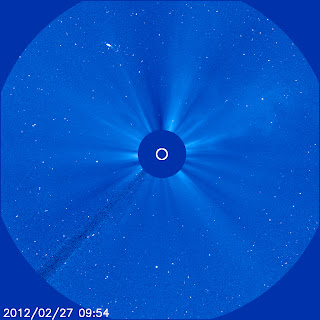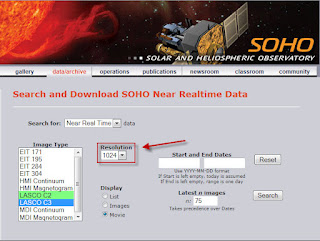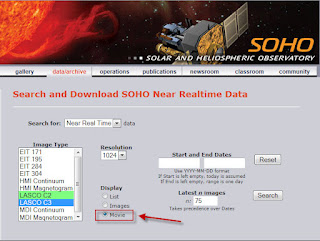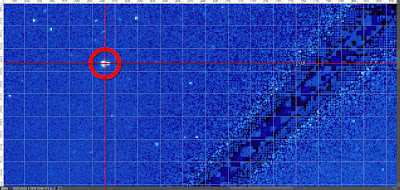Last week I discussed an important trait all successful citizen science projects share -- "Benefit the User". This week's "Engage the User" is very similar...engaging participants provides satisfaction and accomplishment benefits to them. But there are enough subtle differences to make this a whole separate post. There are also many interesting ways to engage users worth sharing with everyone.
Engaging users doesn't just bring people into the project. It also keeps them involved. Engaged users work on more projects, expand the project's scope, and market the project to friends about it. So it can be both a motivational and a recruitment tool. Here are some tools projects have used to engage fully with their citizen scientist volunteers:
- Motivate the User: People need a push sometimes. Just because they joined your project and have learned how to participate, that doesn't mean they'll stick around. This is especially true for projects where users perform the same tasks multiple times (such as identifying whale songs or counting craters). Users may lose interest after 10-15 minute. So project scientists need ways to keep things interesting by offering new goals as initial ones are met. ProjectNOAH addresses the problem by issuing users "Badges" based on their project accomplishments. As an example, the project asks users to identify plant-life in their area...if they upload 10 or more identifications they can win a Badge. Users can even create their own campaigns to encourage participation in certain sub-projects. So if I'm looking for help locating Japanese Maple trees in Maryland, I can create badges for people submitting, one, five, or ten locations. This keeps people motivated long after a project begins and the initial enthusiasm fades.
- Create a Community - People are social animals, so creating a community around the project is a great way to engage participants in a project. Projects become a place to meet friends and discuss science issues of similar interest. This is especially true for citizen science which occasionally seems like a lonesome endeavor. The annual Christmas Bird Count owes some of it's 100+ year existence to the community of participants involved. These communities teach new participants how to birdwatch, reinforce the concept that individual citizens can perform meaningful science, and keep participants coming back year after year. Who wants to miss a year when all your friends are waiting for you? Best of all, any activity you can do with friends is always going to be a fun. This keeps people, old and new, coming back every year.
- Interact in Real Time - People like instant gratification. Not only do they want to see an impact to their participation they want to see it quickly. The Valley of the Khans project offered that in spades. This project combined field expeditions searching for Genghis Khan's tomb with satellite image analysis performed by citizen scientists. The research team was literally in the field driving to investigate locations identified by users back home. People could watch their work pay off and know the next day's work would be acted on too. It also provided a "reality" to the project by showing.the research is not just academic...it leads to tangible real-world discoveries. Obviously this project can not go on forever, and there have been breaks in between expeditions, but analysis continues with participants knowing potential sites will be investigated during a future archaeological dig. Just the promise of interaction can keep people motivated.
- Provide Feedback - People want to see results. So another way of engaging participants is by providing frequent feedback on the project's status. It's a relatively simple thing to do, but many project fail to do so and miss out on simple opportunities to interact with their participants. Even distributed computing projects, which normally don't involve much personal interaction, can use feedback to provide engagement they would otherwise struggle to do. For example, the World Computing Grid and BOINC platforms send out regular scientific updates on their progress to date. But even though every project can do this unfortunately not all do. Updates can also highlight many different things. Sometimes they focus on process measures, such as data units analyzed, while others highlight exciting finds. For example, the Galaxy Zoo's frequent publicizing of Hanny's Voorwerp (a strange celestial object discovered by a participant) let's participants see their discoveries taken seriously, and provides excitement by showing the important discoveries made by everyday people.
- Offer Excitement - People are drawn to excitement, and this is probably the simplest and oldest example of engagement. But it's still a very powerful tool. In the 1990s SETI@Home re-ignited the citizen science field largely from the excitement of hunting aliens. It wasn't about wide-band spectrum analysis or Fourier transforms, but looking for E.T. This seems obvious but in practice it isn't always so. For example, the Great Internet Mersenne Prime Search is not about obscure mathematics...it's about James Bond cryptology and winning prizes. All citizen science is exciting, but understanding how to communicate that excitement is a definite skill. One worth mastering to keep users coming back for more.
Those are my initial thoughts on ways project scientists can fully engage their users. But I can't have a long discussion about engaging citizen scientists without mentioning OpenScientist's own engagement strategies. Which is why I've increased the social media presence to improve my dialogue with OpenScientist readers. For starters, the
Twitter and
Facebook pages are fully set up now and are ready for you to sign up (I'll wait a minute while you quickly click over...) As you'll see I'm posting general news, information, and updates from around the world of citizen science. That means articles I come across, updates received on projects we've discussed, and early discussions of upcoming posts will all be featured here. Basically quick, small items I think you'll find interesting. It doesn't replace the featured projects and opinion pieces of the blog; those are longer form and will always be my bread and butter. This just allows a whole new level of content for you to enjoy.
Of course the regular method of interacting with OpenScientist remains...offering your ideas, reactions, and critiques in the comments below each article. I've received much good advice from you and this site reflects much of the knowledge you've provided me. So please keep that wisdom coming. It truly is appreciated.
So let's stay engaged. Share your your thoughts through any of these means, and let's continue these fascinating conversations!
FOR MORE ON THIS SERIES:
Stay tuned each week for more on this subject. And as I just mentioned, you can also follow us on
Facebook or
Twitter for the latest updates.















